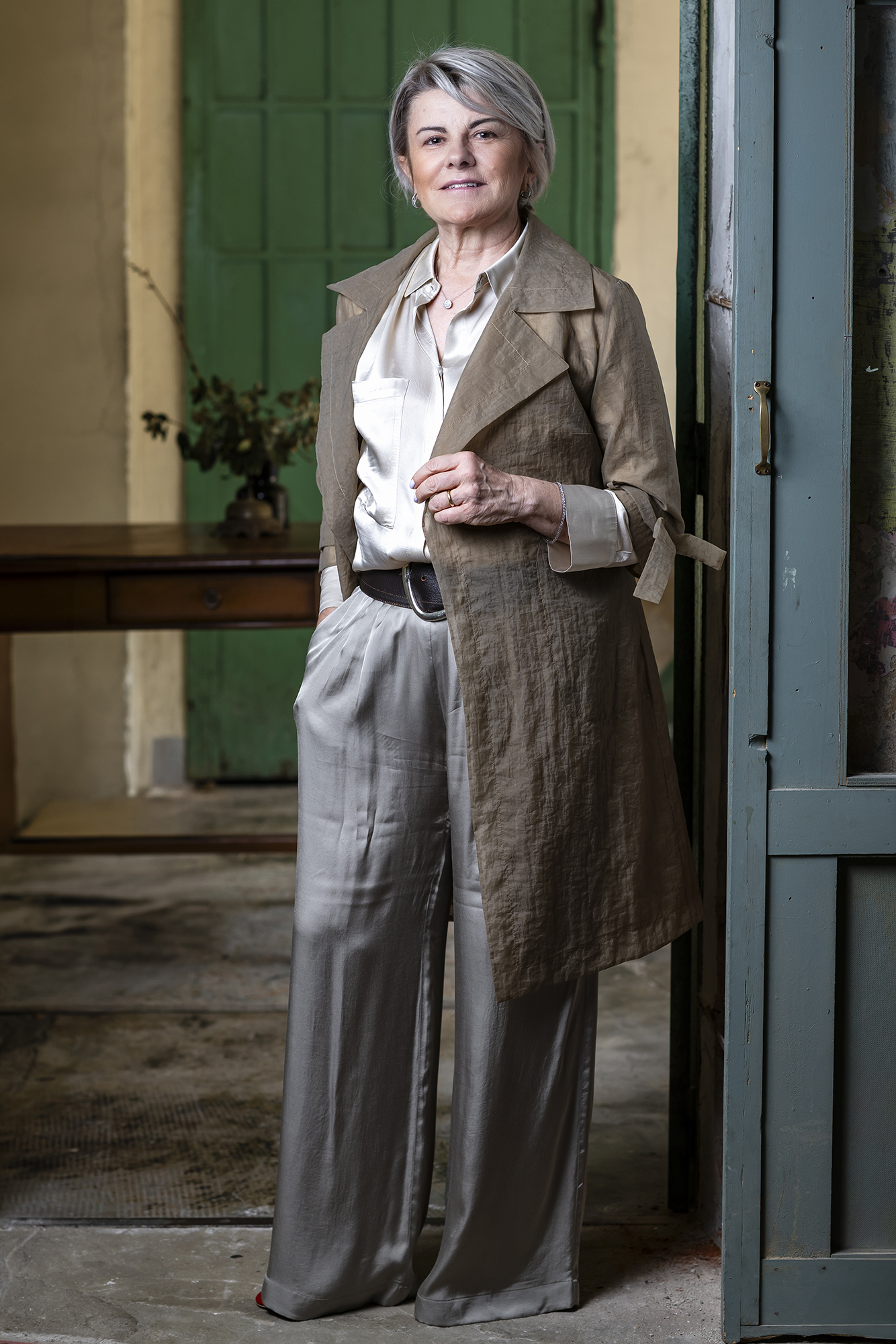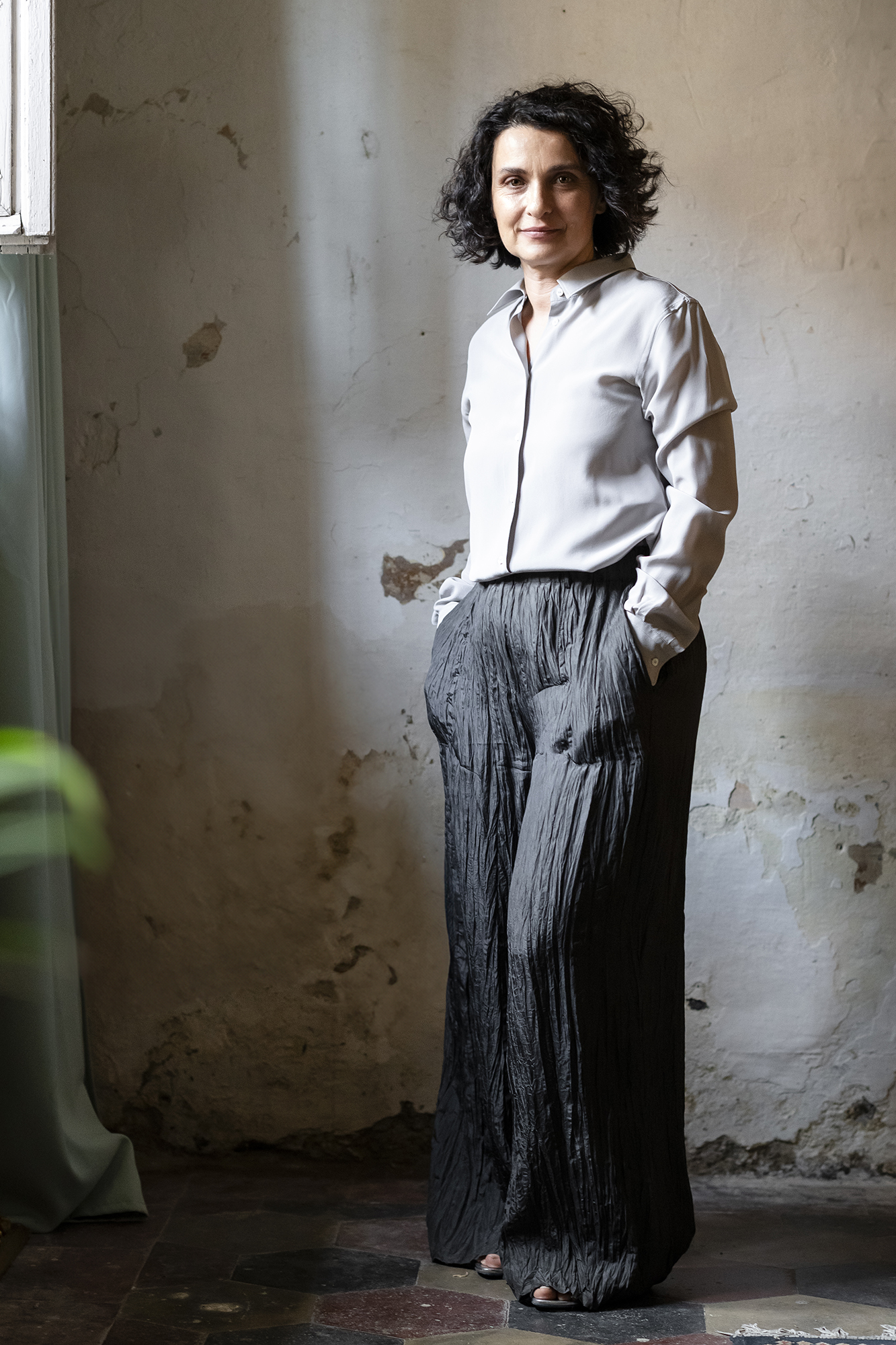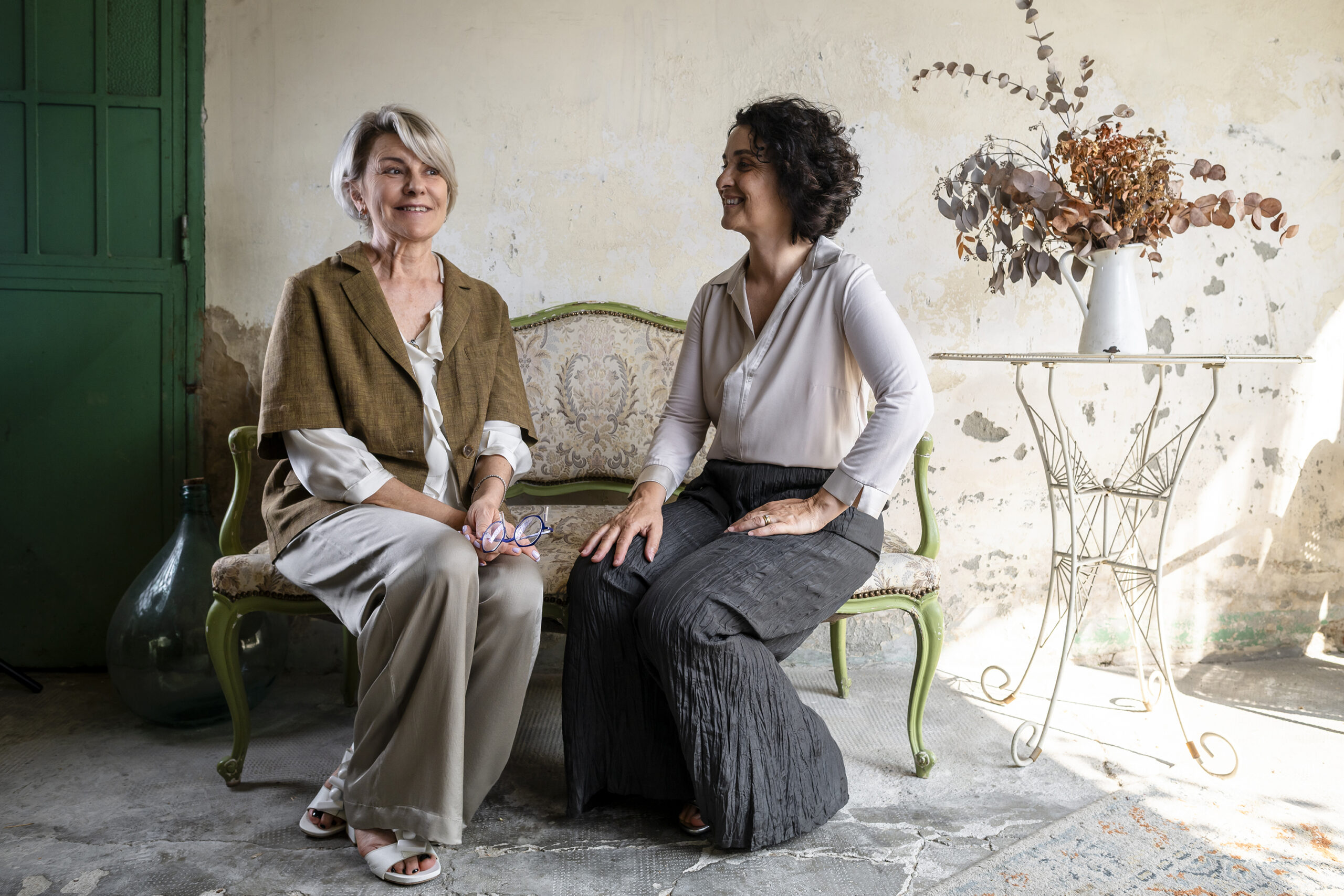About Us
Where there is room for all the stories
We are Gloria Ferrero and Teresa Arcelloni, two therapists who have been sharing practice, training and research for twenty-five years. The Duogramma was born out of our shared vision of relationships: a method that brings couples’ stories into an evolving and dynamic dimension, capable of bringing out unexpected meanings.
We developed it on the basis of therapist training and immediately brought it into clinical practice, with the desire to offer a useful and transformative tool. We believed all the way, together, side by side, refining it to make it a key to exploring and rewriting couples’ stories, an approach that enhances storytelling and the power of the sign.
It is the result of years of research, discussion and professional understanding. We never saw it only as a tool. It is our answer to those looking for a complex and meaningful way to work in relationships.

Teresa Arcelloni, a physician and systemic psychotherapist, dedicated her career to couples therapy and systemic sex therapy, always looking at the language of emotions and the meanings of sexuality in relationships. Trained at the Centro Milanese di terapia della Famiglia since the 1990s, she has trained generations of therapists, passing on to them an approach that is not limited to technique, but considers relational and couple dynamics in all their complexity.
Teresa carried out this research through courses and publications, until the recent release of her book Psicoterapia Sistémica de Pareja, published in Mexico, Chile, Paraguay and Brazil. She is a member of the Systemic Academy in Brazil. Also noteworthy is her translation and edition of the Italian edition of “Terapia Sessuale Sistemica”, by Ulrich Clement, a reference text for many therapists. She has taught in Latin America, Switzerland and Italy, helping to spread systemic sex therapy as a fundamental field of study for understanding and treating couple relationships.

Gloria Ferrero is a psychologist and systemic-relational psychotherapist: a reference in couples therapy and training for psychotherapists. She began working with adolescents and families, then shifted her focus to couple dynamics, exploring the tensions, ruptures and transformative possibilities that emerge in relationships.
The clinic was her first research space, which was soon accompanied by training and supervision that for her always meant opening up perspectives, changing points of view, bringing out new meanings and readings. She has always sought tools that would help therapists and patients retell their story as a couple with a different perspective, without framing it in rigid schemes. Since 2007, she has been a lecturer at the Centro Milanese di terapia della Famiglia (Milan Family Therapy Center), accompanying psychologists and psychotherapists in their professional growth and in integrating systemic thinking into their clinical work.
We come from different backgrounds, but it is precisely in our differences that we find a meeting point. We recognize ourselves in the way we look at relationships, in the desire to build something new, something useful and transformative.
The Duogramma was born out of our clinical experience, our training, our mutual esteem and the questions we asked ourselves about how to help people explore their history as a couple without getting stuck in rigid patterns. We experiment, discuss and improve, always focusing on one fundamental principle: storytelling is not static, it evolves with the storyteller.
The Duogramma embodies everything we believe in: a flexible method that helps you look at complexity, recognize its patterns, choose more consciously. We don’t just conceive it. We live it, teach it, and carry it forward with the certainty that it can really make a difference.
It all started with a question: what happens if we observe the couple in their evolution and not as a static photograph?
In 2007, we taught at the Centro Milanese di terapia della Famiglia in Turin. We worked with the Genogramma, the method that focuses on the relationships of generations before us, giving voice to all the characters in our family plot and telling us who we were: sons, daughters, grandchildren, sisters, brothers. But we felt something was missing.
Relationships are not limited to the past or blood ties, they are built over time. However, in the Genogramma, the couple relationships of the individual narrating had no place. So we decided to change our perspective: from the family past to the couples we once lived with and with whom we now live, from origins to personal trajectories.
The Duogramma was born from this realization: it’s not just about who you were and who your ancestors were, but also about how you choose to be in a relationship.
Our method is the result of years of clinical work and training and now we want to make it available to colleagues so that it becomes a valuable tool in their encounters with patients. The first evidence of this approach can be found in the publication Il Duogramma nella formazione sistemica. I terapeuti e le loro relazioni di coppia (Terapia Familiare n.87, 2008, Franco Angeli).
